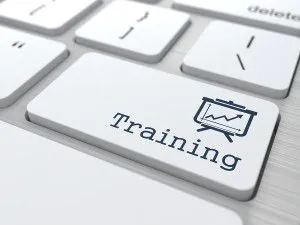3 Stages of Effective Sales Training

Let’s start with a riddle.
What starts before it begins and continues long after it ends?
If you answered “sales training” (which you probably did not) you’d still be incorrect. The answer, as it turns out, is effective sales training. And while this entry is too short to demonstrate the differences between sales training and effective sales training, we’ll just cover the three stages that make sales training most effective.
BEFORE
As mentioned above, sales training should start before it begins. When your organization engages with a professional sales training company, there are a number of things that should be done before any training takes place.
1) Make sure the trainer takes the time to get to know your company. There will likely be one trainer dedicated to conducting the training for your team. In order for this or any trainer to be effective, they must be knowledgeable of your company’s current sales process, your company culture, and even industry lingo and nuances if they aren’t already familiar.
2) Gauge your team’s appetite for the training. Is your team motivated and excited about the prospect of sales training, or are you dealing with apathetic attitudes and “Oh, here we go again” mentalities? If your team would just as soon catch up on their paperwork than attend another sales training session, you’re going to need to do some internal marketing leading up to the actual training. Do your best to combat the problem sooner than later.
DURING
1) Ensure that the trainer’s credibility is established. Does your trainer have real-world sales experience to pull from, or has he or she been trained in sales training? There is a big difference – and believe us, your sales reps will sniff out and exploit that inexperience, greatly reducing the trainer’s credibility and therefore the validity of the training itself.
2) Make sure adult learning best practices are being used. Adults learn differently than children and adolescents, therefore they should be taught differently. When long-term behavior change is the desired outcome, application-based activities have been proven far more effective than lecture-based learning. For example, and because of this reality, at Janek we strive to keep lecture time to no more than 30 percent of overall training program makeup.
AFTER
1) Take advantage of the critical time window. There is a sweet spot following training (roughly 90 days) where reinforcement must occur. Otherwise, up to 80 percent of new knowledge – no matter how initially impactful – will be lost. During this time, sales managers must coach to reinforce new skills and best practices.
2) Be realistic about ongoing reinforcement. This is threefold; make sure you have A) the time to dedicate to ongoing coaching and reinforcement, B) the required manpower for the tasks at hand, and C) make sure the manpower that you have in place is actually equipped to provide the necessary coaching. An ill-equipped manager can be more discouraging and detrimental than no coaching at all. If you don’t have the three necessary components for reinforcement, make sure the company that delivered the training can provide these things.

- Account Planning (11)
- Awards (49)
- Client Testimonial (37)
- Personal Branding (19)
- Podcast (11)
- Research (70)
- Sales Career Development (87)
- Sales Coaching (156)
- Sales Consulting (137)
- Sales Culture (170)
- Sales Enablement (354)
- Sales Leadership (109)
- Sales Management (248)
- Sales Negotiation (16)
- Sales Prospecting (125)
- Sales Role-Playing (18)
- Sales Training (235)
- Selling Strategies (263)
- Soft Skills (70)
- Talent Management (94)
- Trusted Advisor (27)
- Virtual Selling (49)
- Webinar (9)























